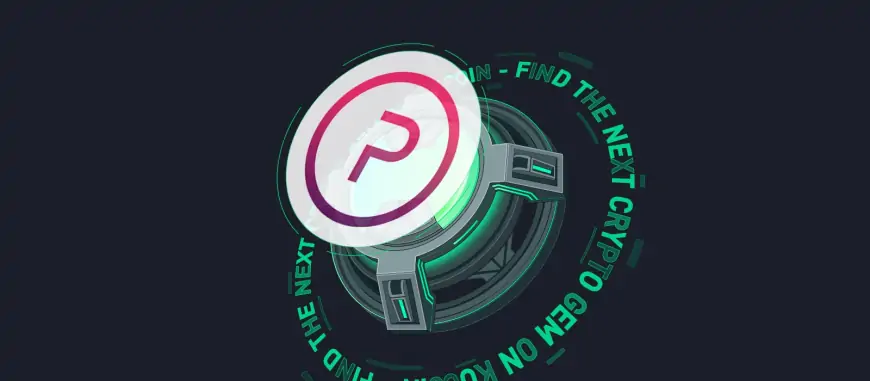What is Polymesh (POLYX)? Exploring the Future of Security Token Offerings (STOs)
Discover the innovative features and benefits of Polymesh (POLYX), a specialized platform designed for security token offerings (STOs).

Polymesh operates as a public permissioned layer 1 blockchain specifically designed to enhance the security token industry. It utilizes its utility token, POLYX, to incentivize and penalize participants in the blockchain ecosystem, thereby enhancing overall security. POLYX also supports governance functions and staking activities within its ecosystem.
Introduction
Securities are financial assets with intrinsic value that can be traded. Tokenizing securities involves representing them digitally on blockchains like Polymesh, a blockchain designed for regulated assets such as security tokens. This technology has the potential to significantly expand the securities market, valued in the hundreds of trillions, enhancing efficiency, transparency, and other benefits.
What is Polymesh?
Polymesh is a layer 1 public permissioned blockchain designed specifically for security tokens, which represent digital contracts for fractions of real-world assets.
As a public permissioned blockchain, Polymesh allows anyone to view the network, but participation requires completing an identity verification process. This verification applies to all participants on the chain, including issuers, investors, stakers, and node operators.
Node operators on Polymesh must be licensed financial entities, ensuring higher network security because these entities face greater reputational risk compared to anonymous actors.
Polymesh combines the benefits of private and permissionless networks, providing trust in the network while maintaining transparency for market participants.
How does Polymesh work?
Node operators and stakers collaborate to secure the layer 1 blockchain and validate blocks.
Node operators validate blocks and are rewarded with POLYX, Polymesh's utility token, for successful validation. Stakers, on the other hand, stake their POLYX tokens on node operators to enhance their chances of being selected for the validator pool every 24 hours. After node operators deduct a commission of up to 10%, stakers receive their share of POLYX rewards.
Securing Polymesh
Polymesh utilizes a Nominated Proof-of-Stake (NPoS) consensus model, originally developed by Polkadot, to establish roles, rules, and incentives within its network. This system enhances blockchain security by imposing penalties for malicious actions, thereby discouraging harmful behavior. Node operators and stakers receive rewards or fines in POLYX based on their performance within this mechanism.
Polymesh’s fee structure
Many public permissionless blockchains feature a fee market where fees can fluctuate rapidly. For example, when users vie for blockchain space to execute code or store data (blockspace), fees typically rise.
Polymesh maintains low and consistent transaction costs by calculating fees based on the on-chain weight (in bytes) and complexity of transactions. These rates can be adjusted by Polymesh Governance, a democratic system comprising the Polymesh Governing Council and POLYX token holders.
The Polymesh Governing Council imposes protocol fees for specific native functions, such as reserving a token ticker, with fee revenues divided in a 4:1 ratio between the Network Treasury managed by Polymesh Governance and node operators. Funds in the Network Treasury are typically allocated to network enhancements and security measures.
What sets Polymesh apart from other platforms?
Polymesh stands out as one of the few layer 1 blockchains dedicated to security tokens. While many securities projects are typically layer 2 solutions on existing blockchains like Ethereum or Solana, Polymesh operates independently as a standalone layer 1 blockchain.
With its infrastructure, Polymesh aims to enhance the security token industry by addressing governance, identity, compliance, confidentiality, and settlement challenges.
Governance
Utilizing the Substrate framework, Polymesh offers seamless upgrades without the need for forks, ensuring a singular chain version. Its on-chain governance model, featuring a council of key stakeholders, enables efficient issue resolution.
Identity
Unlike most public blockchains that allow anonymous participation, Polymesh mandates identity verification, assigning an on-chain identity to every participant. This approach ensures traceability of on-chain interactions to real-world entities.
Compliance
The blockchain's core layer supports the creation and management of security tokens, with optional features like compliance and rules automated and enforced through smart contracts at the token level.
Confidentiality
Polymesh employs the MERCAT protocol (Mediated, Encrypted, Reversible, SeCure Asset Transfers) to enable confidential issuance and transfer of assets. This ensures trade privacy without compromising compliance or transparency.
Settlement
Polymesh facilitates instant settlement for both on- and off-chain assets through its on-chain settlement engine, two-way transaction affirmation, and near-instant deterministic finality.
What is POLYX?
POLYX serves as Polymesh’s native utility token and is classified as such under Swiss law, following guidance from the Swiss financial regulator FINMA. POLYX is integral for governance, securing the blockchain through staking, and the creation and management of security tokens.
Governance
Polymesh Governance oversees the network's direction. Verified POLYX holders influence governance by submitting Polymesh Improvement Proposals (PIPs) or voting using POLYX. To submit a PIP, a user must bond POLYX to it via Polymesh Governance. Once approved, PIPs undergo voting by the Governing Council for implementation.
Staking
Verified POLYX holders can participate in staking by bonding their tokens to a node operator of their choice, thereby increasing the operator's likelihood of earning rewards.
The Polymesh ecosystem
Current participants within the Polymesh ecosystem include cryptocurrency exchanges, established entities in tokenization (such as Polymath), and firms holding substantial portfolios of security tokens (like RedSwan). The Polymesh Association endeavors to foster additional growth through two initiatives:
- The Grants Program, which supports individuals and businesses developing open-source features on Polymesh.
- The Ecosystem Development Fund, aimed at companies employing proprietary technology that integrates with Polymesh.
For developers interested in integrating Polymesh, comprehensive resources are available, including the Polymesh SDK library and dedicated community support channels.
In addition to enhancing the security token sector, the Polymesh team is focusing on several other areas such as stablecoin infrastructure, integrating non-fungible tokens (NFTs), ensuring confidentiality through the MERCAT protocol, and enhancing user onboarding processes.












































